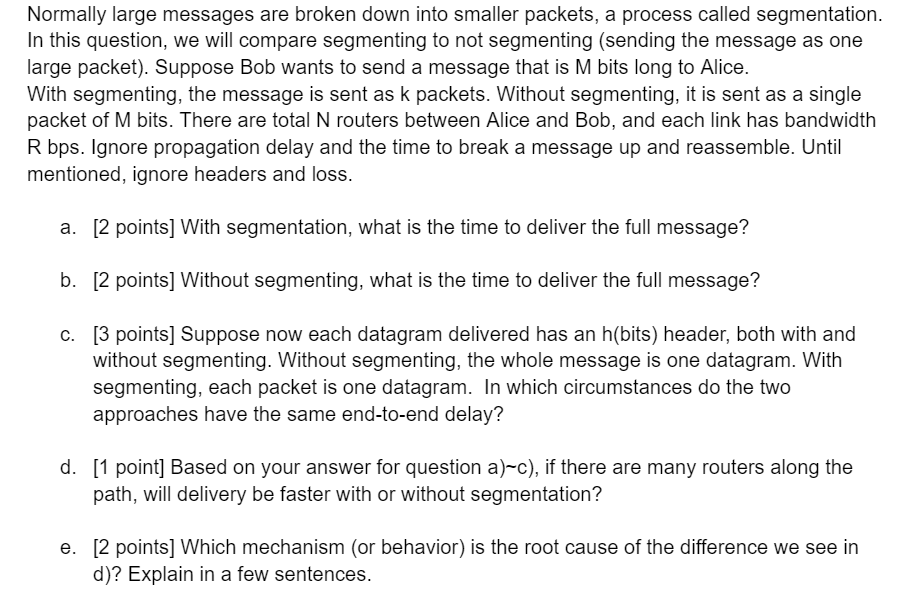Answered step by step
Verified Expert Solution
Question
1 Approved Answer
Normally large messages are broken down into smaller packets, a process called segmentation. In this question, we will compare segmenting to not segmenting (sending

Normally large messages are broken down into smaller packets, a process called segmentation. In this question, we will compare segmenting to not segmenting (sending the message as one large packet). Suppose Bob wants to send a message that is M bits long to Alice. With segmenting, the message is sent as k packets. Without segmenting, it is sent as a single packet of M bits. There are total N routers between Alice and Bob, and each link has bandwidth R bps. Ignore propagation delay and the time to break a message up and reassemble. Until mentioned, ignore headers and loss. a. [2 points] With segmentation, what is the time to deliver the full message? b. [2 points] Without segmenting, what is the time to deliver the full message? c. [3 points] Suppose now each datagram delivered has an h(bits) header, both with and without segmenting. Without segmenting, the whole message is one datagram. With segmenting, each packet is one datagram. In which circumstances do the two approaches have the same end-to-end delay? d. [1 point] Based on your answer for question a)-c), if there are many routers along the path, will delivery be faster with or without segmentation? e. [2 points] Which mechanism (or behavior) is the root cause of the difference we see in d)? Explain in a few sentences.
Step by Step Solution
There are 3 Steps involved in it
Step: 1

Get Instant Access to Expert-Tailored Solutions
See step-by-step solutions with expert insights and AI powered tools for academic success
Step: 2

Step: 3

Ace Your Homework with AI
Get the answers you need in no time with our AI-driven, step-by-step assistance
Get Started


